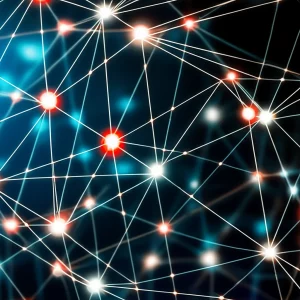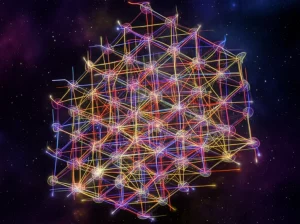Network Centrality Under Siege: How Sampling Bias Skews Our View
Hey there! Let’s dive into something super important in the world of complex networks – you know, those tangled webs that represent everything from social connections to biological interactions. We often use these cool tools called *centrality measures* to figure out who the big players are in these networks. Think of identifying influencers online, tracking diseases, or finding crucial genes in our bodies. Centrality measures are basically mathematical ways to rank nodes (the dots in the web) based on how connected or important they are.
But here’s the catch, and it’s a big one: real-world data is messy. Networks we build from experiments or observations are rarely perfect. They’re often *incomplete* or, worse, *biased*. This is what we call *sampling bias* or *observational error*. It happens for tons of reasons – maybe your experiment can’t detect certain connections, or maybe researchers just focus on the nodes they already think are interesting, ignoring others. Whatever the reason, this bias distorts the network structure we see, and that got us thinking: how badly does this mess with our centrality calculations?
Why Centrality Matters (and Why Bias is a Pain)
So, why do we even care about centrality? Well, these indices are like our compass in a complex map. They help us pinpoint the nodes that are most influential, most connected, or most critical for keeping the network together. From finding viral content spreaders on social media to identifying potential drug targets in biological systems, centrality is a big deal. There are classic measures like *degree* (how many connections a node has) or *betweenness* (how often a node is on the shortest path between others), and honestly, there are over a hundred different ways to measure centrality out there now!
The problem is, if the map we’re using (the network) is wrong because of sampling bias, our compass (the centrality measure) might point us in the wrong direction. Imagine trying to find the most important intersection in a city using a map where half the streets are missing or only the busy ones are shown. You’d get a totally skewed picture! In biological networks, like protein interaction networks (PINs), this is a common issue. Experiments have limitations, and researchers often focus on specific proteins, leading to some interactions being overrepresented and others completely missed. This distortion can significantly change which nodes appear important, potentially leading us to wrong conclusions about how the network functions.
Tackling the Bias Problem – Past and Present
People have definitely thought about this before, especially in social and random networks. Studies have looked at how stable centrality measures are when you randomly mess with the network or introduce errors. Some measures hold up better than others depending on the network’s structure. For example, some found that dense networks were more robust to random errors, while sparse ones were more sensitive.
But here’s where things get interesting: biological networks haven’t gotten as much attention regarding this specific problem, despite being incredibly important for understanding life itself. Biological networks have unique structures and properties, and we really needed to see how centrality measures behave *there* when faced with messy data.
So, our study decided to tackle this head-on. Instead of trying to add bias (which is hard to model perfectly), we took existing networks (both synthetic ones we built and real biological ones) as our ‘ground truth’ – basically, the ideal, complete network. Then, we simulated *removing* edges in different, biased ways. The idea is, if removing edges in a certain biased pattern makes the centrality rankings go haywire, it tells us that collecting data with that *same* bias would also give us a distorted view. It’s like running the film backward to understand how the mess was made!
Our Simulation Setup – Six Ways to Break a Network
To simulate different types of observational errors, we came up with six specific ways to remove edges from our networks. We started with a complete network and then gradually removed edges (from 10% up to 90%) using these methods. For each level of removal, we calculated the centrality measures and compared them to the original, complete network using something called *rank correlation* (basically, how similar the list of important nodes is before and after removing edges).
Here are the six ways we messed with the networks:
- Random Edge Removal (RER): Just randomly pick edges and delete them. No favorites, pure chance.
- Highly Connected Edge Removal (HCER): Target edges connected to nodes that have *lots* of connections (the hubs). This simulates situations where you might over-study or over-report connections for well-known players.
- Lowly Connected Edge Removal (LCER): Go after edges connected to nodes with *fewest* connections. This is like ignoring the less popular or harder-to-find parts of the network.
- Combined Edge Removal (CER): A mix – target edges from nodes that are either super highly connected *or* super lowly connected, ignoring the middle ground.
- Randomized Node-based Edge Removal (RNBER): Assign a random “removal score” to each node, and then remove edges based on these random scores. This simulates biases totally unrelated to the network’s structure itself.
- Random Walk Edge Removal (RWER): This one’s clever. It simulates how research often happens: you find one node, and that leads you to study its neighbors, and then *their* neighbors, creating a chain of investigation. We remove edges based on how likely they are to be visited during a random walk through the network. This models bias introduced by following research trails.
We tested these methods on synthetic networks (Erdős-Rényi, which are random; scale-free, which have hubs; and Watts-Strogatz, which are kind of in-between) and several types of yeast biological networks (protein interactions, gene regulation, metabolites, and reactions). We looked at local (Degree), intermediate (Subgraph), and global (Betweenness, Closeness, Eigenvector, PageRank) centrality measures.

What We Found – Networks React Differently
Okay, so what did we learn from all this edge-removing fun? First off, no surprise, the more edges you remove, the less reliable your centrality measures become. The rank correlation generally drops significantly as the network gets sparser.
In the synthetic world, *scale-free* networks (the ones with hubs) were generally the toughest. They held onto their centrality rankings better than the random (Erdős-Rényi) or in-between (Watts-Strogatz) networks. This makes sense – the core structure around the hubs is quite resilient. Among the removal methods, *LCER* (removing edges from low-degree nodes) and *CER* (removing from extremes) were the least damaging. Removing peripheral connections doesn’t mess with the core structure as much.
Now, biological networks were a bit more complicated. Protein interaction networks (PINs) turned out to be surprisingly robust – they handled the edge removal pretty well. The other biological networks (metabolite, gene regulatory, reaction) were more sensitive, and their order of robustness shifted depending on *which* centrality measure and *which* removal method we used. There wasn’t a single “most robust” biological network type after PINs; it was more of a case-by-case thing.
When we looked at the centrality measures themselves, local measures like *Degree centrality* seemed to be more reliable overall, especially in biological networks. Global measures like *Betweenness* and *Eigenvector centrality* were often less dependable when the network was incomplete or biased. This suggests that focusing on immediate neighbors might be safer than relying on measures that depend on the entire network structure when your data is shaky.
And remember those six removal methods? *LCER* was consistently the *most robust* scenario – removing edges from low-degree nodes had the least impact on centrality rankings. This confirms that the network’s core structure, defined by high-degree nodes, is key to stability. On the flip side, *RNBER* (random node-based removal) and *RWER* (random walk removal) were the *most disruptive*. RNBER shows how biases completely unrelated to network structure can still wreck your analysis, while RWER highlights the danger of biases introduced by how data is collected (like following research trails).
Finding the “Stable” Players
Beyond just looking at the overall robustness of measures, we also tried to find *stable nodes* – nodes whose centrality rank didn’t change much even as we removed lots of edges. We did this for the yeast metabolite network. We found that nodes with low variability in their rank across different removal levels were often key metabolites involved in fundamental processes, like L-glutamate (amino acid metabolism), Ammonium (nitrogen metabolism), and Coenzyme A (energy/lipid metabolism). This is cool because it suggests that even in incomplete networks, some truly central players might still stand out consistently.

Wrapping It Up – Key Takeaways and What’s Next
So, what are the big takeaways from our deep dive into network bias?
- Network structure totally matters: Scale-free networks and PINs are tougher against missing data than others we looked at.
- How you lose data matters: Removing edges from low-degree nodes (LCER) is the least harmful scenario, while biases like random node selection (RNBER) or following research trails (RWER) are the most disruptive.
- Centrality measure choice isn’t always critical, but be wary of global measures: In incomplete networks, many centrality measures behave similarly, but global ones (like betweenness and eigenvector) can be less reliable, especially in biological networks.
- Biological networks have a robustness hierarchy (sort of): PINs are generally the most robust, followed by gene regulatory, reaction, and metabolite networks, but the exact order can shift.
- Be careful with non-PIN biological networks: Since their robustness varies more, applying centrality measures to them requires extra caution due to potential sensitivity to missing data.
These points really hammer home that we can’t just blindly apply centrality measures to real-world networks without thinking about how the data was collected and what biases might be present.
Our study focused on synthetic networks and yeast biological networks, but the lessons learned are relevant much wider. Networks in social science, transportation, power grids – they all have unique structures and face different types of data challenges. Future work could explore how bias affects centrality in *those* domains. Also, our edge removal methods are simplified models of real-world bias. Getting more realistic bias models, perhaps by looking at actual experimental data patterns, would be super valuable. And finally, we treated directed networks (like gene regulation, where connections have a direction) as undirected for simplicity. Looking specifically at how bias affects centrality in directed networks is another important step.
Ultimately, understanding the resilience of centrality measures to incomplete and biased data is crucial for making reliable conclusions from network analysis. It’s about being smart and cautious when interpreting those node rankings, especially when you know your map might have a few streets missing!
Source: Springer







